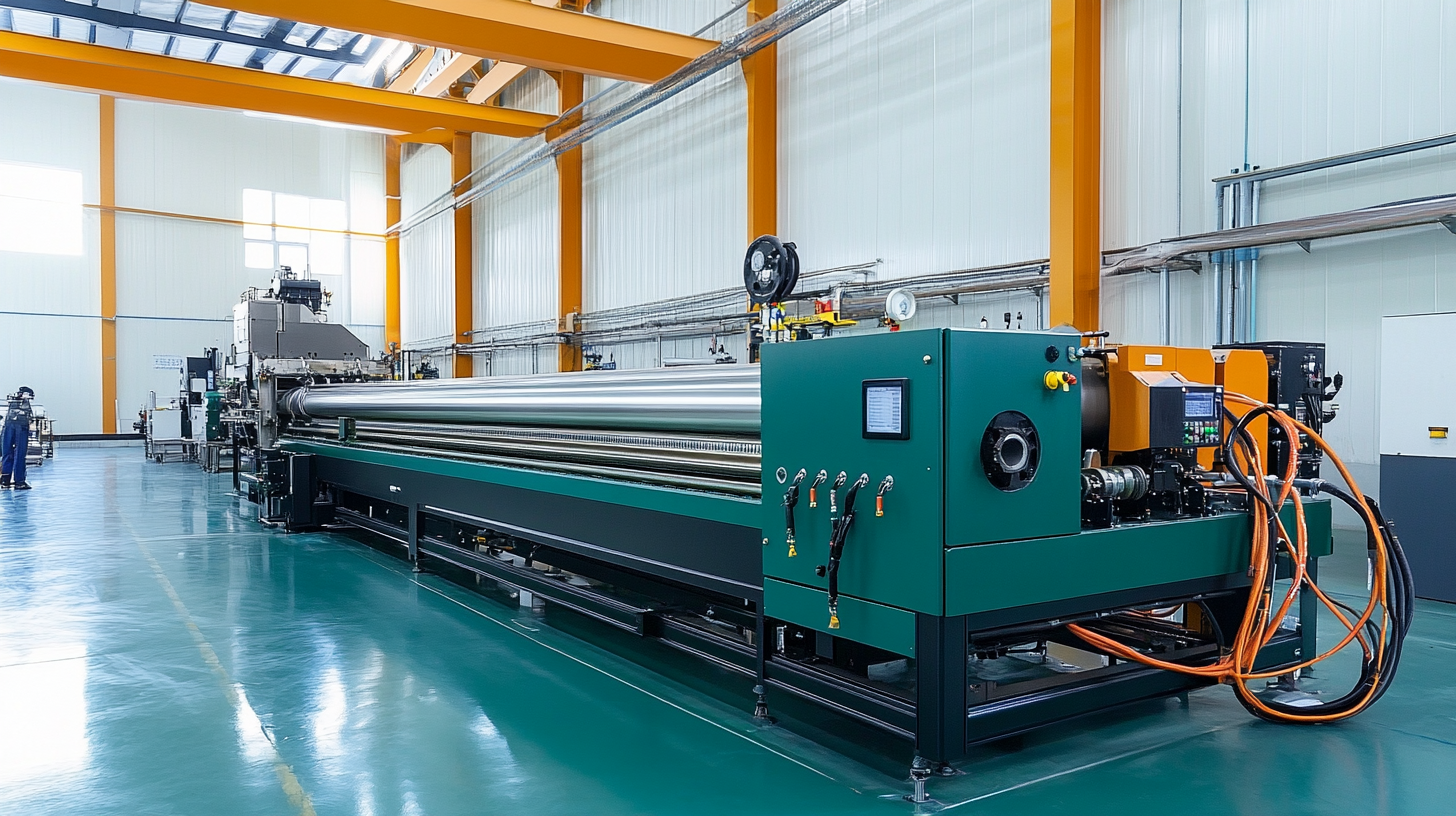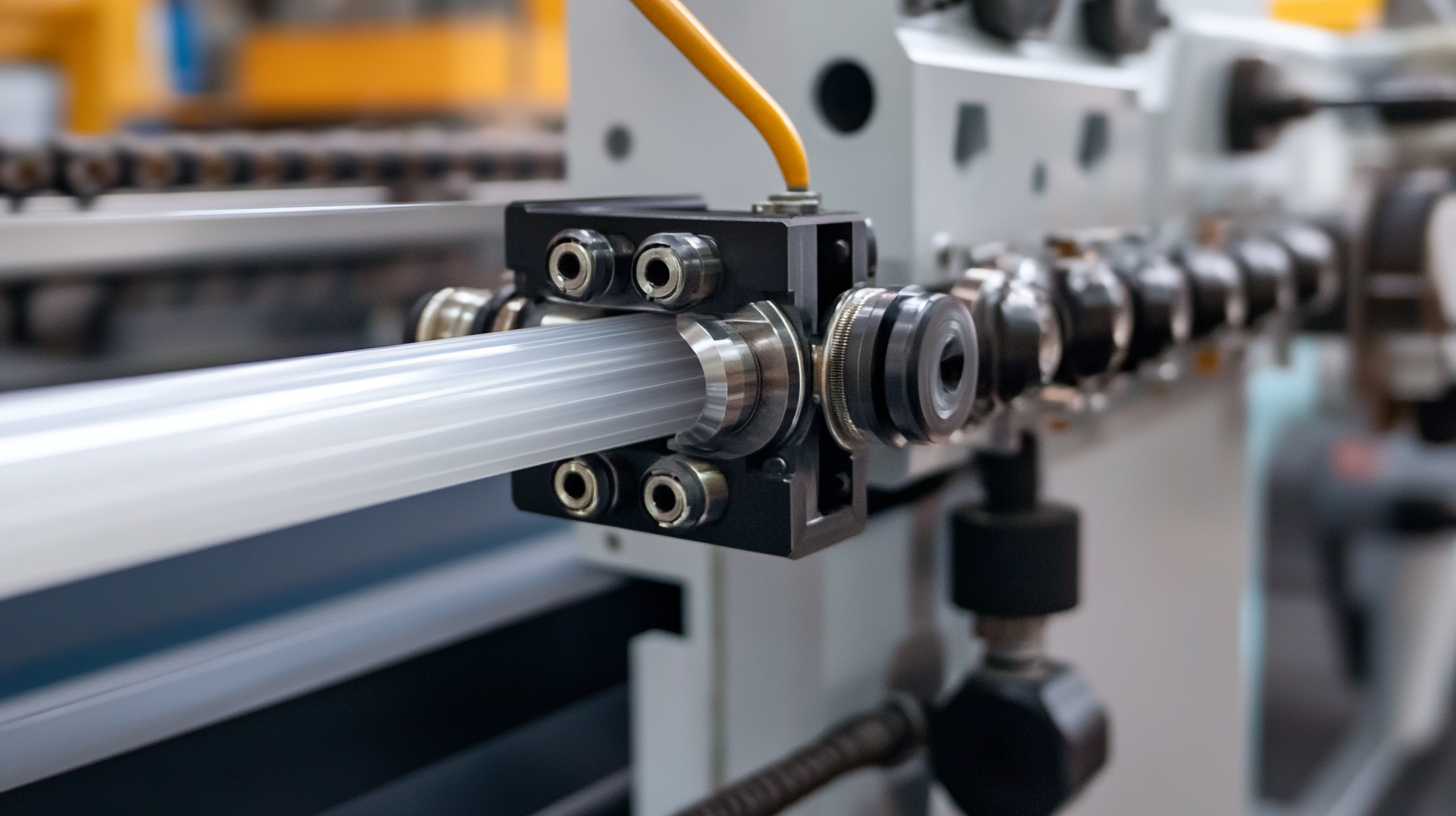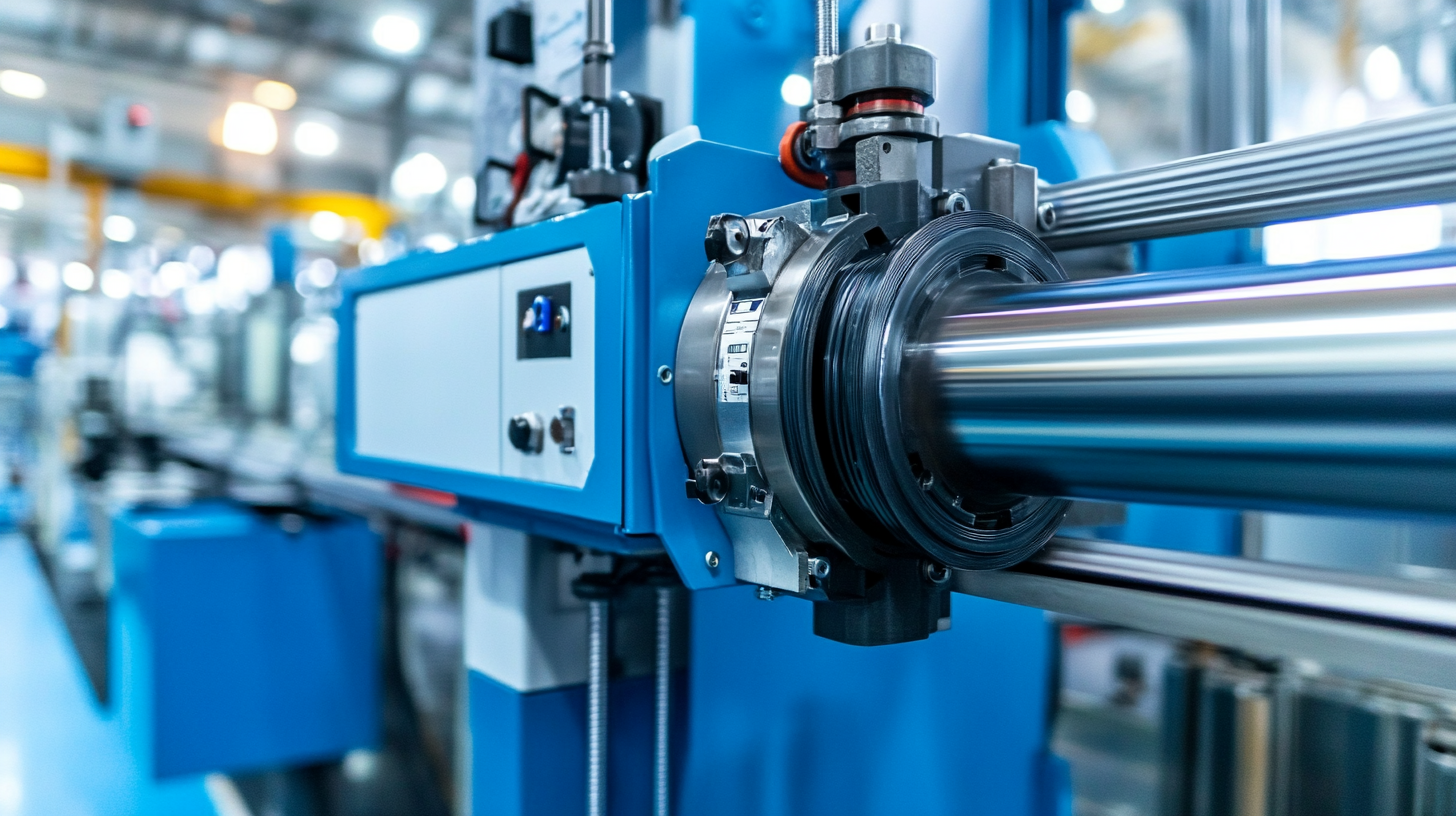
In the competitive landscape of modern manufacturing, choosing the right equipment can significantly influence operational efficiency and product quality. This is especially true when it comes to the selection of a Plastic Profile Extrusion Machine, which plays a crucial role in producing a variety of plastic profiles used in numerous industries. With the demand for high-quality plastic products on the rise, businesses must be equipped with machines that not only meet their specific manufacturing needs but also uphold standards of excellence. In this blog, we will provide an ultimate checklist to help you make an informed decision when selecting the best Plastic Profile Extrusion Machine for your operations. From evaluating technical specifications to understanding the reputation of suppliers, this guide will ensure that you invest in a machine that aligns with your business objectives while also sourcing from reliable factories known for delivering superior products globally.

As you explore your options, keep in mind the crucial factors that will guide your decision-making process.
When selecting a plastic profile extrusion machine for your business, focusing on key features can significantly enhance your operational efficiency. Firstly, consider the machine’s size and capacity. A machine that can handle larger profiles may be beneficial for companies anticipating growth or diversification in product offerings. Additionally, the versatility of the machine—such as its ability to extrude various materials or produce different shapes—will play a crucial role in adapting to market demands.
Another vital feature is the technology employed in the machine. Advanced technologies not only improve production speed but also enhance product quality through precise control over parameters such as temperature and pressure. This can lead to reduced waste and better energy efficiency, aligning with the increasing push for sustainability in the industry. Lastly, assess the ease of maintenance and support services provided by the manufacturer; a well-supported machine ensures minimal downtime, ultimately impacting your bottom line positively.
When selecting the best plastic profile extrusion machine for your business, understanding the different types of extrusion technologies is crucial. The plastic processing machinery market is diverse, featuring various methods such as injection molding, blow molding, and, of course, extrusion molding. Each technology offers unique benefits and applications, making it essential to identify which aligns with your production needs. For instance, extrusion molding is particularly well-suited for creating continuous profiles, such as pipes or sheets, and is known for its efficiency and cost-effectiveness.
Recent advancements in extrusion technology have introduced energy-efficient machines designed to optimize power consumption. This is vital for businesses aiming to reduce operational costs while enhancing production capabilities. Additionally, emerging trends in the market indicate a robust growth trajectory, with expectations of a 4.5% CAGR from 2025 to 2030. Innovations in areas such as medical device extrusion and the integration of artificial intelligence within the extrusion process further underscore the significance of staying updated with technological developments. Understanding these dynamics can help businesses make informed decisions when investing in new extrusion machinery.
| Dimension | Single Screw Extrusion | Twin Screw Extrusion | Co-Extrusion | Profile Shape Flexibility |
|---|---|---|---|---|
| Efficiency | Moderate | High | High | Good |
| Material Compatibility | Wide Range | Various Specialty Materials | Multi-Material | Versatile |
| Production Speed | Moderate | Fast | Medium to High | Depends on Setup |
| Setup Complexity | Simple | Complex | Moderate | Moderate |
| Cost | Lower Initial Investment | Higher Initial Cost | Varies | Varies |
When evaluating the cost-effectiveness of extrusion equipment, it's crucial to consider both initial investments and long-term operational costs. According to a report from MarketsandMarkets, the global plastic extrusion market is projected to reach $7.5 billion by 2025, with a compound annual growth rate (CAGR) of 4.8%. This growth indicates that while the upfront costs of extrusion machines can be significant, the potential for profit growth in high-demand markets makes it a worthy investment.
**Tip:** To ensure you choose an economically viable machine, conduct a thorough cost-benefit analysis. Include factors such as energy consumption, maintenance costs, and production efficiency. Investing in machinery with lower energy consumption can lead to substantial savings over its lifetime, especially with electric machines that can save up to 20% more energy compared to traditional hydraulic systems.
Additionally, consider the machine's adaptability for different materials and product types. A versatile machine may involve a higher initial price but can lead to diversified production capabilities, reducing the need for multiple machines. A study from Grand View Research emphasizes that flexibility in production can enhance operational efficiency and reduce downtime, making a compelling case for investing in advanced extrusion technology.
**Tip:** Always factor in the potential for scalability. As your business grows, having a machine that can keep pace with increased demand without incurring prohibitive additional costs is a key component of evaluating cost-effectiveness.
When selecting a plastic profile extrusion machine for your business, the reliability of your supplier should be a top priority. According to a report by MarketsandMarkets, the global plastic extrusion market is expected to reach USD 50.6 billion by 2025, underscoring the growing demand for quality machinery in this sector. A dependable supplier not only provides machines that meet industry standards but also offers after-sales support, which is crucial for maintaining optimal operation and minimizing downtime. In fact, studies have shown that businesses with strong supplier relationships experience 60% less operational disruption than those that don't prioritize supplier reliability.
Furthermore, the long-term success of your extrusion operations hinges on having a supplier that is responsive to your needs. A report by IBISWorld highlights that 30% of production failures in the plastics manufacturing sector stem from inadequate supplier support and parts availability. This data points to the importance of choosing a supplier that not only delivers high-quality machines but also ensures timely access to spare parts and technical assistance. By investing in a reliable partner, your business can enhance productivity, drive innovation, and ultimately improve your bottom line in the competitive landscape of plastic manufacturing.

Maintenance is essential for ensuring the longevity of your plastic profile extrusion machine. Regular upkeep can help prevent unexpected breakdowns that can disrupt production and lead to costly repairs. One of the primary maintenance tips is to keep the machine clean. Regularly removing dust and plastic residue from both the exterior and interior components can enhance performance and reduce wear. Pay special attention to the feed section and die areas, as accumulated residues can impede the extrusion process and impact product quality.

Another important aspect of maintenance is monitoring lubrication levels. Ensure that all moving parts are adequately lubricated according to the manufacturer’s specifications. This not only minimizes friction but also prevents overheating, which can damage the machine over time. Additionally, implementing a routine inspection schedule to check for worn components can save you from significant downtimes. By addressing issues proactively, you can extend the operational life of your extrusion machine and maintain consistent production quality, ultimately benefiting your business in the long run.
